Note
*Presents Wally with Headphones playing Mesmerizer by Satsuki* Wally, I really think you need to hear this.
(Also I know those kind of headphones didn’t exist back then, but can I pull the magic anon card? /lh)
“You said these fancy earmuffs play music? Alright pal if you say so- OH- huh they do!… well they play noise, what language is this…? Yea… uh…”
*he takes off the headphones looks rather confused*
“It’s no Billie Holiday or Ted Louis but it sure is.. interesting? What ever you do doesn’t show Sammy that, he’s sure to call it an “atrocity to music” and blow a fuse over it. And when that happens? I’m outa here!”
#mod reply: the song isn’t bad!! I just think since he’s from the 1920’s he wouldn’t be into modern Japanese alt music-#he would be so confused#I wonder how Sammy would react to hearing modern music?#I like to headcannon that once Elvis becomes popular in the 50’s that’s when wally really starts to enjoy music#batim#batim wally#bendy and the ink machine#wally franks#ask blog#wally ask blog#batim ask blog#bendy
9 notes
·
View notes
Text
Blues singer Marion Harris began her career in Chicago's vaudeville houses, later graduating to Broadway musicals in the late 1910s. At this time she began recording early jazz and blues songs in New York City, becoming the first widely known white singer to popularize the genre. She is pictured here at the top of her game in 1924.

7 notes
·
View notes
Text
Did your grandfather carry a Quikoin coin purse? So did ours! We’ve long wanted to offer a Quikoin emblazoned with our logo as a thank-you to those who help keep our toe-tapping tunes alive and streaming. Now you can have a Cladrite Radio Quikoin all your own! To learn more about the history of the Quickoin and how you can get one, visit bit.ly/CR_Quikoin!
#Cladrite Radio#1920s music#1930s music#1940s music#vintage promotional items#vintage giveaways#vintage popular culture
5 notes
·
View notes
Text
Changes - Paul Whiteman & His Orchestra (Bix Beiderbecke & Bing Crosby)
youtube
#jazz#jazz music#music#bix beiderbeck#bing crosby#paul whiteman#1920s style#1920s fashion#1920s music#popular songs#1920s aesthetic#1920s#Youtube
1 note
·
View note
Text
Ugh I feel embarrassed after the production meeting for the play I'm doing right now. I just feel like I'm not meshing with it and not getting the same vision as the director.
1 note
·
View note
Text
i wonder how many weebs like ryukoka and kayokyoku
#inb4 whos ryukoka and kayokyoku#they are genres of music that were created in the 1920s#they lost popularity in the 1980s#and traditional-sounding japanese music made from that decade forwards is called enka#instead of ryukoka or kayokyoku
1 note
·
View note
Text
the history of animation in a nutshell
Early 1900s: hey what if comic strips could like move?
Late 1910s early 1920s hey what if we mashed this up with live action people?
late 1920s: hey what if this thing had sound?
Early to mid 1930s: hey what if this had people actually talking and also color?
late 1930s: hey you know that super cool movie that one lady animated with paper cut out silhouettes? What if we did that with painted cells? Would people even pay to see that? Never mind it turns out the answer is yes.
1940s: ah shit most of our animators got drafted and/or hate us now cause we weren’t paying them. IT’S PROPAGANDA TIME BABY. Also haha hitler got hit with a mallet and also the most racist depictions of Japanese people ever.
1950s to 1960s : oh what’s this newfangled thing? Television? What if you could air cartoons on it? Oh fuck no I ain’t paying that much to get the charecters to have different backgrounds and for the charecters to like, move fluidly. Also manga and anime are steadily growing more popular.
1970s: (Ralph Bakshi walks into a comics store and finds a furry comic) X rated animated movie? *cue the screams of mothers and their unsuspecting children now being introduced to the revolutionary idea that cartoons don’t equal kids stuff? WHAT IS THE WORLD COMING TO?
1980s to 1990s: we can have full on animated Broadway musicals? Wait, what do you mean animated movies can count for the Oscar’s? What do you mean now they get their own catagory because the academy still thinks their for babies? Anime and manga are taking off in the west. SWEET JESUS WHAT DRUGS ARE THE JAPANESE ON SHOWING THIS SHIT TO KIDS. But also why is it so fucking good. Maybe some of these aren’t even meant for kids? Wait We can sell toys to kids with cartoons? Wait we can actually put effort into these cartoons on television? The fuck to you mean we can animate in 3D now? What do you mean we can have well animated, well written sitcom shows like the simpsons? What do you mean you can make cartoon charecters say fuck? What drugs are creators at Nickelodeon on? Do I even want to know?
2000s: oh my god, there is this one show that I really like cause it’s really well written and genuinely funny but I can’t talk about it because it’s animated and we all know cartoons are for babies right? Oh look it’s the transformers movie, look how far CGI has evolved so we can make the transformers in a movie.
2010s: holy shit I know these shows are for kids but they’re just well written and have so much meaningful things to say about the world. Wait, it’s cool to like cartoons now? They they have fandoms for this? Fuck yeah I’m in. (Enters one of the most notoriously toxic fandoms of all time) THEY HAVE GAY PEOPLE IN THESE SHOWS NOW? AND COMPLEX EMOTIONAL STORYTELLING? AND ADULT ANIMATED SHOWS CAN BE MORE THAN JUST SITCOMS WITH THE SAME JOKES AND STYLE? WHY IS IT THAT EVERY DISNEY CARTOON SINCE GRAVITY FALLS INCLUDE THINGS THAT GET MORE AND MORE FUCKED UP? WHY DO I FUCKING LOVE IT? WHY THE FUCK DID DISNEY DO THE OWL HOUSE DIRTY LIKE THAT?
2020s: I got this show I wanna pitch but it dosen’t fit into any box that the networks want and also I’m afraid that they’ll just randomly cancel it before I can finish the story I want to tell. Wait, I can just post the pilot on my YouTube channel, see if anybody actually likes this thing I made and just make the show independently? FUCK THE NETWORK! I AM THE NETWORK
#Animation#indie animation#cartoons#classic cartoons#disney#warner bros#Out of the inkwell#Flesher studios#Gravity falls#star vs the forces of evil#amphiba#the owl house#steven universe#Bojack horseman#glitch productions#ramshackle#the amazing digital circus#Murder drones#lackadaisy#hazbin hotel#Ducktales#infinity train#ralph bakshi#fritz the cat#sailor moon#neon genesis evengelion#revolutionary girl utena#helluva boss#the simpsons#south park
633 notes
·
View notes
Text
Fan Theory: Alastor had a rivalry with Thomas Edison (yes, really) in the 1920s

I originally had a whole theory typed up with lots of evidence for this, but my computer crashed and deleted all of it, so here are some of the basic points of the theory that I came up with:
Alastor grew up in the early 1900s, when the phonograph, invented and sold by Thomas Edison, was the main form of music recording and playing in the United States. Alastor was likely called a "gramophile", or gramophone enthusiast "who eschewed a wife and children to focus on music", as he was an asexual during this era. However, radio started to replace phonographs in the 1920s-1930s, cutting into Edison's profits, to his frustration.
Alastor was a popular radio host in the 1920s-1930s, and was one of the main reasons why people were buying and using radios, instead of Edison's phonographs and records, to play music. If people could listen to music for free on the radio, why would they buy Edison's phonographs? (Alastor was quite smug about this.)
The quality of music on the radio was often better than on Edison's phonographs and recordings, as many radio shows provided live music, which means inviting the band and musicians to play live on-air. It wasn't something that could be mass-produced for profit, also to Edison's consternation.
Alastor's specialty was jazz, a form of music originally "invented by, and for, the phonograph". (He also dabbled in blues as well.)
Unlike Edison and other phonograph and record producers, who were often racist and used what is called "digital blackface" today (i.e. pretending to be Black in recordings, because hiring Black artists over white artists was unthinkable), Alastor was an authentic mixed-race Creole host, though likely "white-passing".
Vox seems to be based, at least somewhat, on Thomas Edison, particularly as Edison didn't just formerly control the music industry with the phonograph, but also the movie industry, with one source stating that 75% of Americans in the 1920s went to the movies "every week". (Edison sold his film studio in 1918.)
Alastor seems to have a special disdain for Vox and his "picture show", all movies and TV shows. My guess is that this came from his disdain for Edison Pictures and the movies vs. radio rivalry.
Edison died at the age of 84 in 1931 from old age and diabetes complications, whereas Alastor was killed in his 30s-40s in 1933.
As an edit, here is Part 2 of this fan theory with a lot more evidence.
#hazbin hotel#alastor#hazbin hotel alastor#alastor hazbin hotel#hazbin alastor#alastor hazbin#alastor the radio demon#thomas edison#hazbin hotel theory#human alastor
995 notes
·
View notes
Text
Historian Henry Louis Gates, Jr., has called the Harlem Renaissance "As gay as it was Black."
With the convergence of the great migration and the jazz age, Harlem became a new center of cultural life for African-Americans. It brought together Black artists in a way that had never been seen before and saw an abundance of new music, theater literature, and art.

Chief among the new art being created there, of course, was drag.

While drag houses and drag balls had previously been put together by the likes of William Dorsey Swann, they reached a level of unprecedented vibrancy and popularity in Harlem in the 1920s. Famed poet Langston Hughes called them "The strangest and gaudiest of all of Harlem's spectacles."
The most celebrated of these balls was the one organized by the fraternal organization The Society of Odd Fellows at the Hamilton Lodge.
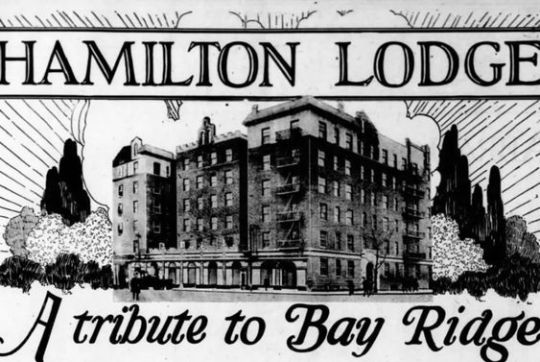
As told by writer George Chauncey in an article for Columbia News, "After I published Gay New York I met a gentleman who grew up in Harlem whose parents would dress up to go to what they called the “faggots’ ball,” and come home and talk about how fine this one looked, and how wonderful it was. He said, "My mother was a very ladylike lady. She was a very prominent woman in Harlem society. This is just something you did.""
737 notes
·
View notes
Text
Descriptions & Propaganda
Dream A Little Dream Of Me
Composed by Fabian Andre and Wilbur Schwandt, with lyrics by Gus Kahn
Notable versions: Louis Armstrong and Ella Fitzgerald (x), Doris Day (x), The Mamas & The Papas (x)
Propaganda: None submitted.
St. James' Infirmary
Traditional
Notable versions: Louis Armstrong (x), Cab Calloway (x), Artie Shaw (x)
Propaganda:
i love how this song starts as a lament and then switches on a dime to such a cool, proud, almost bragging defiance of death. and of course that trumpet!! that trombone!!
imo this song exemplifies the rich tapestry of popular music and the links between the jazz standards, the blues, and the english, irish, and appalachian folk traditions. people sort of fight over whether this song is influenced by the unfortunate rake/rakes progress/young trooper cut down in his prime/etc., (musicologist a. l. lloyd’s theory) or not- there’s a whole book about it, “i went down to the st. james infirmary” by robert harwood.
but none of that really matters. if you love the blues and you love folk music this song is like a familiar hug, full of the themes and motifs you recognize but maybe can’t quite pin down. the mysterious origins are part of the fun. extra propaganda: if you know/love/have ever listened to “blind willie mctell” by bob dylan, this song is the father.
youtube
i like the way this one sounds but i also think it's historically/anthropologically pretty cool... it's part of the lineage of "the unfortunate rake" which also spawned popular folk songs like "streets of laredo" and possibly "house of the rising sun" (debated among experts but possible), but this one unlike those others was taken up by jazz artists starting in the 1920s and eventually came to be regarded as a jazz standard. fascinating stuff!
97 notes
·
View notes
Text
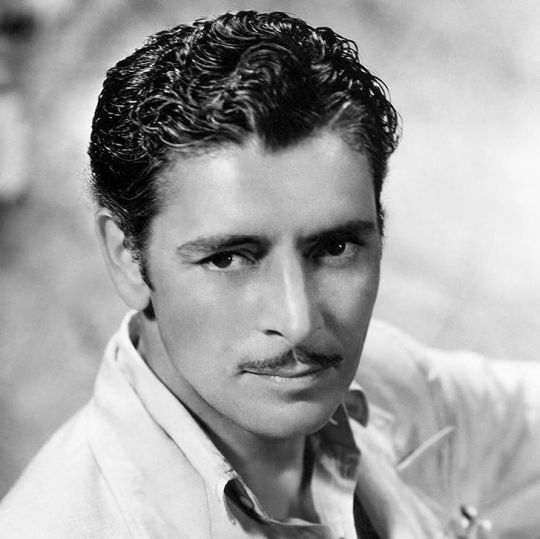
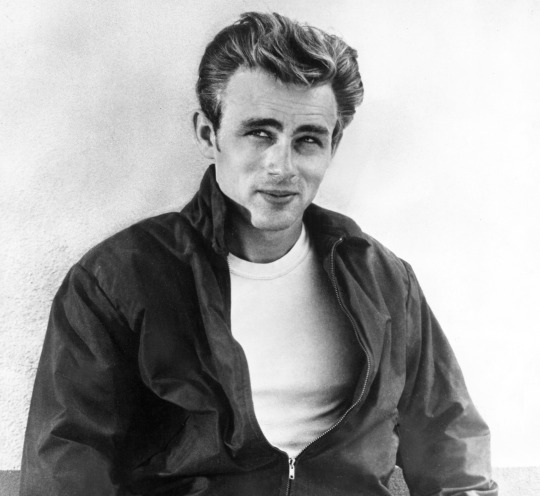
Propaganda
Ronald Colman (Arrowsmith, Random Harvest, Prisoner of Zenda)—"God! Ronnie Colman! Wasn't he marvelous? He had the greatest movie technique I've ever known in my life!" -Vincent Price
James Dean (Rebel Without A Cause, East of Eden)—can i just say that while james dean was horrendously hot, he also had a i-want-to-pick-him-up-and-carry-him-around-in-my-pocket-slash-hoodie-and-feed-him-treats kind of vibe to him? maybe it was because he was only 5'7, or maybe it was because (to me, at least) he constantly looked like a sopping wet poor little meow meow, or maybe it's because his eyebrows looked like they were too big for him. whatever it was, i'm beginning to understand why people still have posters of him in their rooms.
This is round 3 of the bracket. All other polls in this bracket can be found here. Please reblog with further support of your beloved hot sexy vintage man.
[additional propaganda submitted under the cut]
James Dean propaganda:
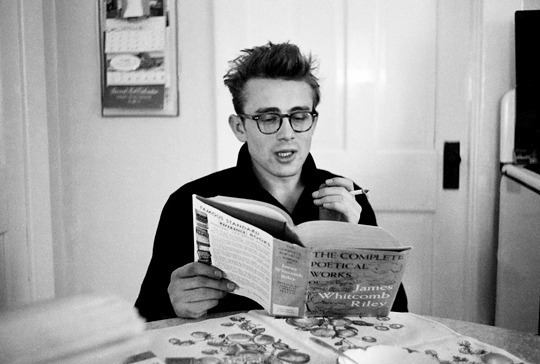
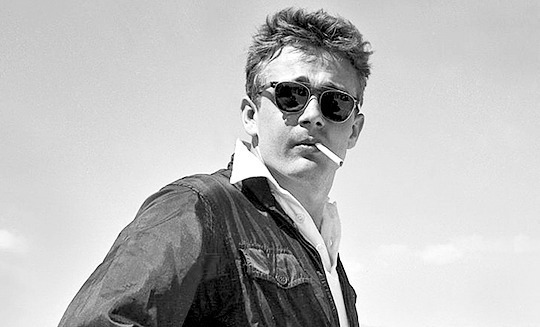

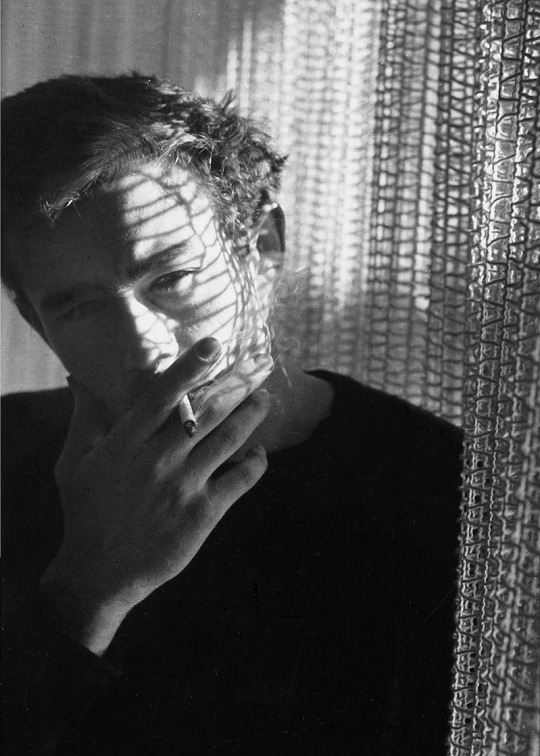
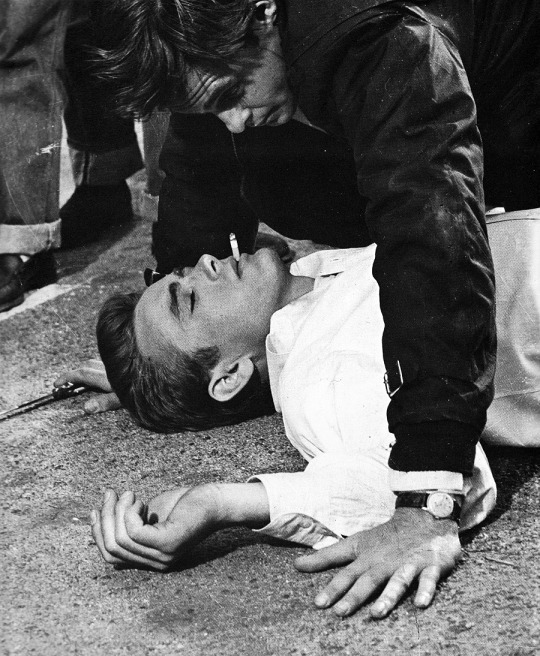
Ronald Colman propaganda:
No one, not even Douglas Fairbanks, could match Ronald Colman's screen close-ups. They were marvellous because he had a beautiful face, and because he had a deep but gentle masculinity: the ideal of the dark Englishman. — Laurence Olivier
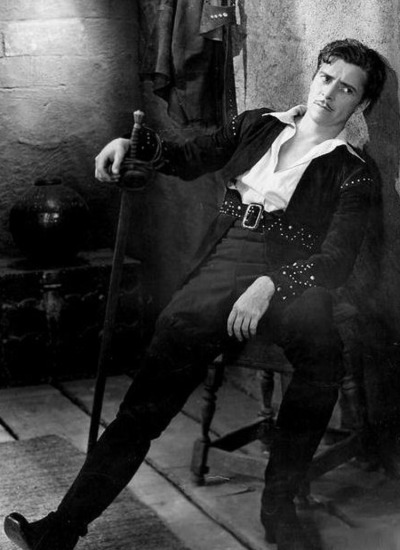

Ronnie became not just an actor for me, but a way of life. — Vincent Price
"I wanna give some propaganda for Ronald Colman! His face acting made him a star in the silent era but when the arrival of the talkie brought one megastar after another down to earth he was one of the only ones to become more popular due to his voice, and became the blueprint for the “mellifluous voiced Englishman” type that Laurence Olivier and James Mason would later become known for. And to prove it here he is reading Shakespeare"
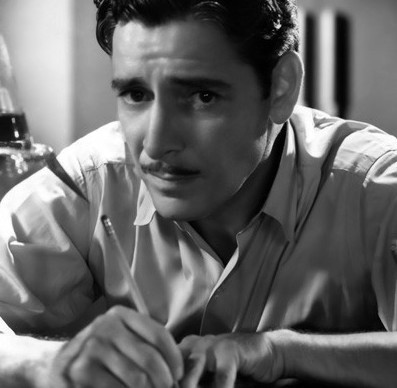
"1920s heartthrob to 1930s matinée idol to 1940s silver fox Oscar winner to 1950s comedy radio star, this man could do it ALL. I feel he is unfairly neglected today despite his smile making it into P.G. Wodehouse novels and the knee-melting qualities of his voice making it into a Rodgers & Hammerstein musical. A women's college made him the winner in their hottest celebrity poll in 1942, and I am right there with them. He was by all accounts an absolutely lovely person, as well, but I recognize that this poll is about the hotness and I think that Ronald Colman deserves more recognition for being ridiculously handsome and doing heartbreaking face-acting and having weaponizable quantities of charm. Also he saved David Niven's life (according to the latter's memoir) by shooting a shark once. Very sexy of him."
He was a wonderful friend; steady, true, full of wisdom and humour. He was generous and completely unbitchy unlike so many actors. A great actor, the master of the understated playing, and one many people (including me) tried hard to copy. A glorious speaking voice, dirty great brown 'fan' eyes, a smile that lit up the whole of Beverly Hills, and a man who could give a lame dog or a struggling actor a lift with never a thought of self-congratulation. — David Niven
299 notes
·
View notes
Text
“The farthing… has vanished”
Remember that line from the Nazi Zombie Flesheaters minisode? Sick and twisted. And we need to talk about the reason why, even though the magic trick in question is nowhere near as spectacular as the Bullet Catch. Let’s start with a quick recap:
The farthing was a British coin worth one quarter of a penny, discontinued in 1961 due to its plummeting worth. The reverse featured the image of a wren, one of Britain’s smallest songbirds with plumage in rather drab shades of beige and brown. Reminding you of someone?
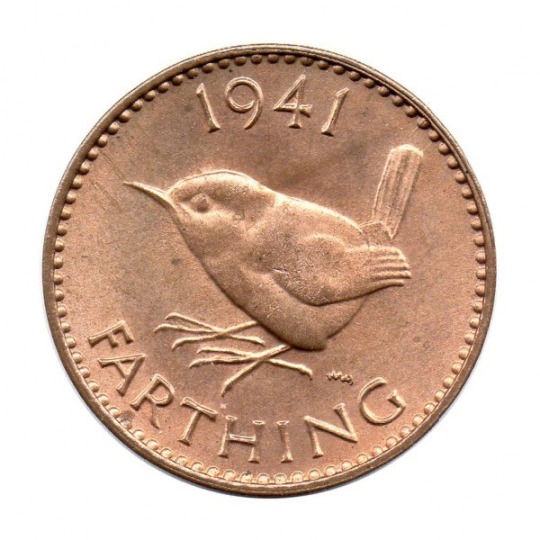
A popular design of a sixpence, the bigger coin in this set, minted in the 1920s and 30s depicted oak branches with acorns. Which means that seen from close quarters, so basically Crowley’s perspective, Aziraphale’s vanishing coin trick leaves empty branches with no bird in sight.
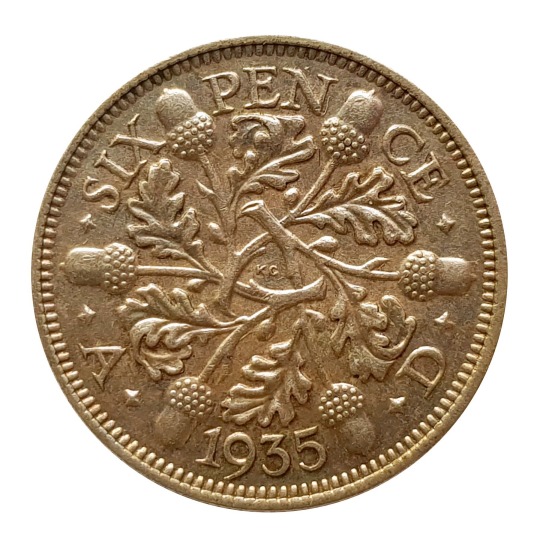
As if that image wasn’t traumatizing enough for almost everyone in the Good Omens fandom post S02E06, the etymology of wren’s name in most European languages refers to royalty in some way. Like a literal king or otherwise supreme bird. That’s why killing a wren or harassing its nest is traditionally associated with bad luck. In certain parts of France it’s still believed that the robbing of a wren’s nest will render the culprit liable to be struck by lightning.
In Irish the wren is called a trickster, which connects to the ancient (as in: mentioned by Aristotle, Aesop, and Pliny) fable on how wren became crowned in the first place — by proving that intellect beats strength:
On one occasion a general assembly of birds resolved to chose for their king that bird which could mount highest into the air. This the eagle apparently did, and all were ready to accept his rule when a loud burst of song was heard, and perched upon the eagle’s back was seen an exultant wren that, a stowaway under its wing, had been carried aloft by the kingly candidate. The trickiness angered the eagle so much, says one tradition, that he struck the wren with his wing, which, since then, has been able to fly no higher than a hawthorn-bush. (Ernest Ingersoll)
In art and folklore this little bird symbolizes rebirth, immortality, protection, and the promise of spring. As a luckbringer it was supposedly present at the stable in Bethlehem when Christ was born; and and Irish proverb runs: “The robin and the wren are God’s two holy men.”
But there’s also a catch. According to legends, it was the flapping of the wings or the song of the wren that betrayed the first Christian martyr, Saint Stephen, while hiding from the mob, and led to his stoning by the Sanhedrin — the highest tribunal consisting of the Head Priest and the Jewish elders.
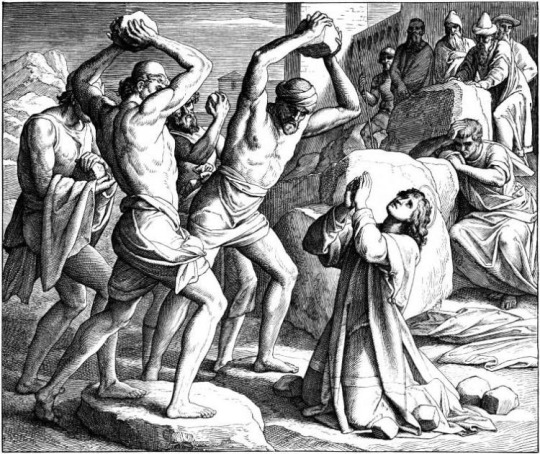
That’s why December 26, his remembrance day, is celebrated in the UK and Ireland as Wren Day. Its highlight was a traditional bird hunt, where the wren as king of the birds was hunted and subsequently paraded through the town and rural areas on top of a pole or holly branch, decorated with ribbons and colored paper, as a substitute of the ancient human sacrifice of the Year King for winter solstice. The wren boys still travel from door to door singing, dancing, and playing music, demanding money to “bury the wren”, but fortunately no more animals are harmed in the process.
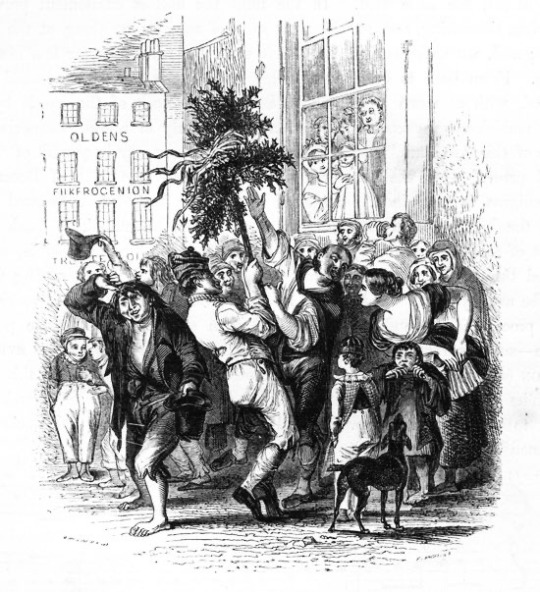
With Aziraphale being chosen as the new Supreme Archangel and literally disappearing from the face of the earth in the season finale, his becoming a scapegoat or a sacrifice to a greater, communal goal might be a real possibility when something goes wrong with the Second Coming. The good news is that this level of danger should be enough to get the Ineffable Husbands back on speaking terms.
#Yuri is doing her thing#Good Omens#Good Omens meta#Good Omens 2#GO2#GO2 meta#Aziraphale#Supreme Archangel Aziraphale#ineffable husbands#1941 minisode#1941 flashback#Fell the Marvellous#magic trick#the farthing has vanished#no nightingales
372 notes
·
View notes
Photo

Black History Month: Gladys Bentley
Gladys Bentley was famous in New York’s Harlem in the 1920s and 1930s. One of her early gigs was at the Clam House - a popular queer venue. There she caught the attention of writer Langston Hughes, who remembered: “ …Miss Bentley sat, and played a big piano all night long, literally all night, without stopping … from ten in the evening until dawn … Miss Bentley was an amazing exhibition of musical energy–a large, dark, masculine lady, whose feet pounded the floor while her fingers pounded the keyboard…”
Gladys was famous not just for her piano-playing, but her dirty improvised lyrics, and her masculine dress. From an early age, Gladys was more comfortable in masculine clothing - her trademark performing outfit was a white tuxedo. She was publicly known to be interested in women, and might even have participated in one of 1930s Harlem’s female-female weddings.
Learn more
Image: studio portrait of Gladys wearing a white tuxedo and top hat, and holding a cane
1K notes
·
View notes
Text


Marilyn Miller was one of the most popular Broadway musical stars of the 1920s and early 1930s. She was an accomplished tap dancer, singer and actress.
32 notes
·
View notes
Text

Today In History
Hazel Dorothy Scott, famed pianist and singer, was born in Trinidad on this date June 11, 1920.
She was active as a jazz singer throughout the 1930s and 1940s. In 1950, she became the first black American to host her own TV show, The Hazel Scott Show.
Scott is famous for her use of “swing” in classical music. She was an outspoken critic of racial discrimination and segregation. Scott used her influence to improve the representation of Black Americans in film.
Hazel Scott was not only the first Black American woman to host her own television show, but she also bravely stood up to the House Un-American Activities Committee and the Hollywood studio machine. The gifted and popular performer dazzled audiences in the U.S. and abroad with her jazzy renditions of classical works.
CARTER™️ Magazine
#wherehistoryandhiphopmeet#historyandhiphop365#cartermagazine#carter#staywoke#hazeldorothyscott#blackhistorymonth#blackhistory
60 notes
·
View notes
Text
Some ideas for Twisted Wonderland events
(*Mild spoilers for some JP server events and Chapter 6)
-A Mulan-themed event: In one of the Halloween events, Silver mentioned knowing the story of Mulan, and Lilia has mentioned having been to "the East" before (not to mention Diasomnia's Halloween costumes are longs). It would be lovely to see Lilia return to the TWST-equivalent of China with some of his friends and meeting new characters--bonus points if someone is twisted from Mushu. A story about a girl who makes a sacrifice for her aging father by enlisting in the military on his behalf fits well with Silver and Lilia, so now would be the perfect opportunity to give them duo magic! Also, Chinese xianxia/martial arts fantasy novels are very popular in Japan and abroad nowadays (if you know, you know :) ), and I would love to see the boys wearing hanfu--they'd look so majestic and cool!
-Sam's hometown event: A Princess and the Frog event where the boys go to the TWST version of New Orleans, chaperoned by Sam. It would be a great opportunity to explore the jazz and culinary scene, and, of course, wear 1920s-inspired clothing. Someone in Octavinelle gets an SSR.
-A pajama-party event: Night Raven College hosts an all-night pillow fight tournament, and everyone gets extremely competitive, kind of like Beanfest. Everyone wears pajamas--I'm not sure if they'd have their own outfits, or if the dorms would match and have PJ sets with their logo on it (kind of like the pajamas they sell at the JP Disney Store). In battle, the chibis throw pillows at each other.
-Octavinelle hometown event: We are introduced to the Tweels' parents and/or Azul's mother. Given how Jamil and Kalim's hometown event carried out, it is likely that only one of the three will actually get an event card, but we'll see. In the Halloween event, Riddle mentioned that he's never seen the sea before. Even though he's had a chance in the Lost in the Book with Stitch event (and the developers probably want to give the spotlight to different characters), I'm afraid he doesn't remember it. Anyway, he deserves to go again. Alternatively, there's an event where the boys go to the Sunshine Lands and meet Prince Rielle. In this case, Riddle and Azul must go together--it would be nice to see after the events of Chapter 6.
-Riddle and Trey hometown event/Black Butler crossover: We've already had a Heartslabyul-themed hometown event with Deuce, but this time, we get to meet Trey's family and Riddle's mother. The likelihood that we get a canon Black Butler crossover as well is very close to zero, but it would be really fun to make a few jokes/hints about Riddle having a younger cousin who wears an eyepatch and solves mysteries with his enigmatic butler. Bonus points if Riddle and Jade have duo magic and dress up in Victorian/ouji clothing.
-J-fashion event: Speaking of ouji clothing, it would be amazing if there was an event inspired by Japanese fashions and subcultures. I think there was a part in one of the anthology mangas where Vil gave the Pop Music Club a visual kei makeover. I know the Pop Music Club has their own SSRs already, but I wouldn't mind seeing more outfits in this style.
-An orchestra-themed event: Some of the NRC students form a classical orchestra. Malleus is there, of course--I imagine him playing the cello this time. The Octavinelle trio is there as well with their respective instruments, as is Idia and Riddle both playing violins. I can see Jamil playing a woodwind instrument--maybe a flute, a clarinet, or an oboe?
#disney twisted wonderland#twisted wonderland#twst#riddle rosehearts#trey clover#azul ashengrotto#jade leech#jamil viper#malleus draconia#lilia vanrouge#silver vanrouge#twst silver#twst sam
158 notes
·
View notes